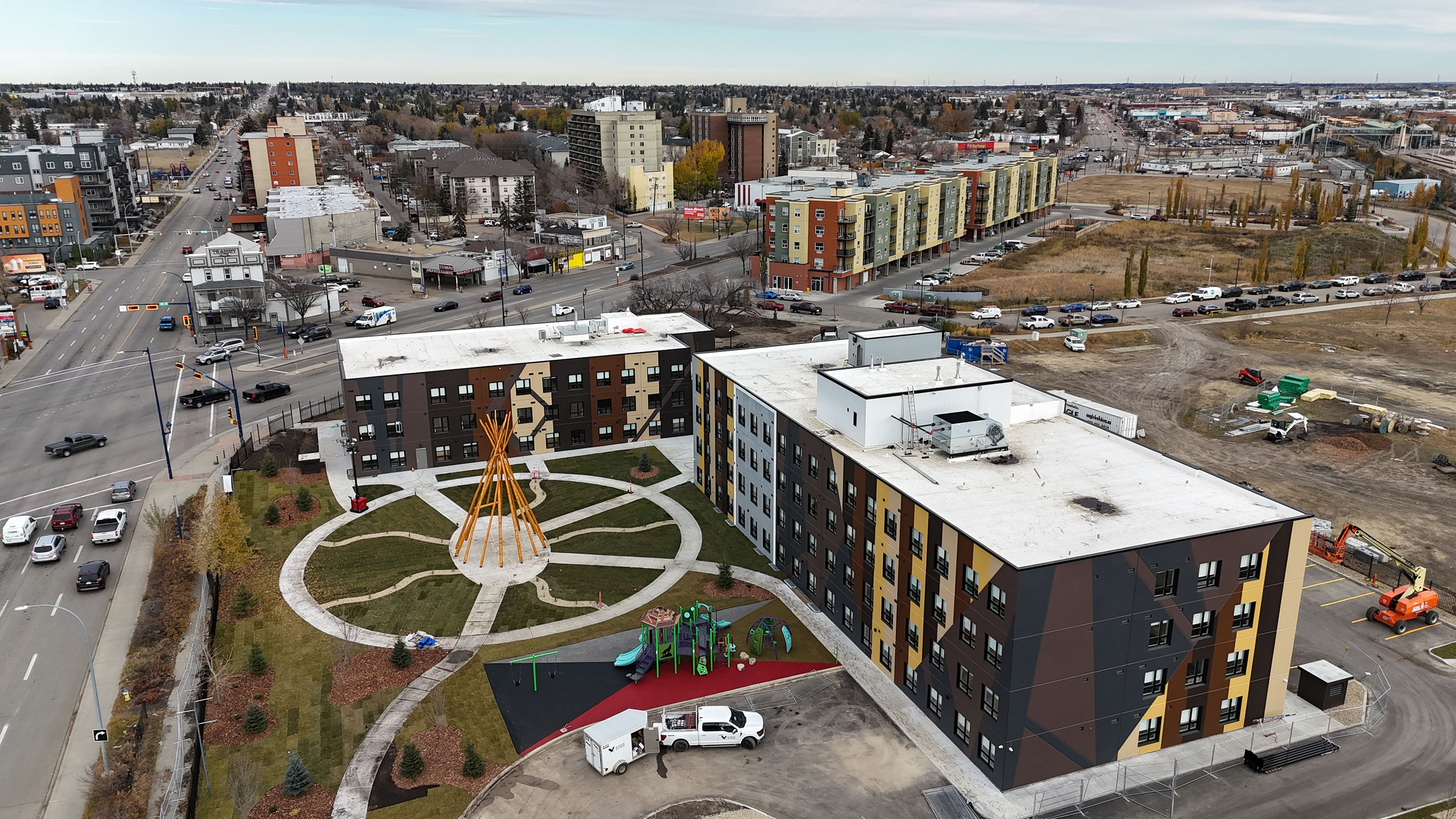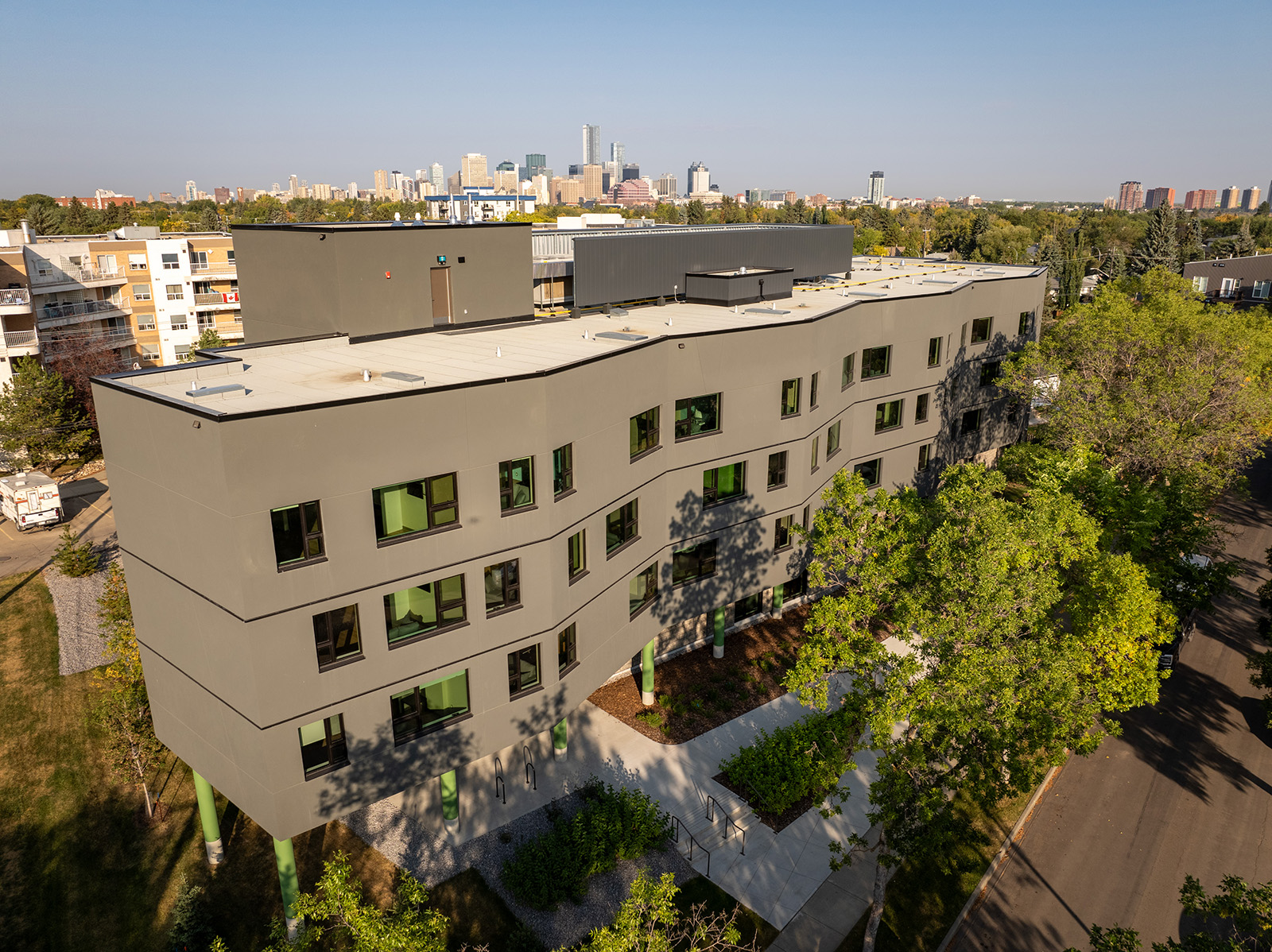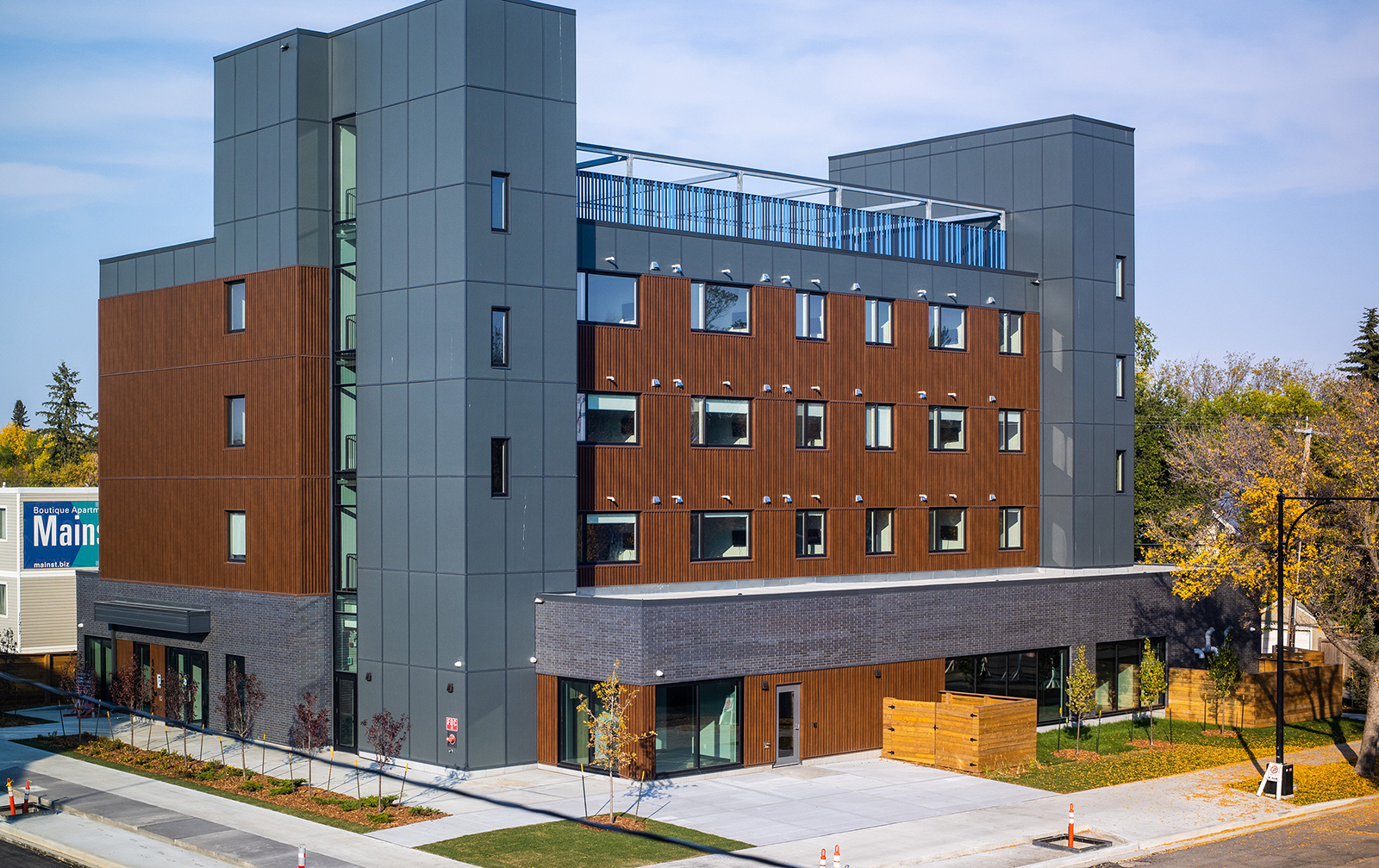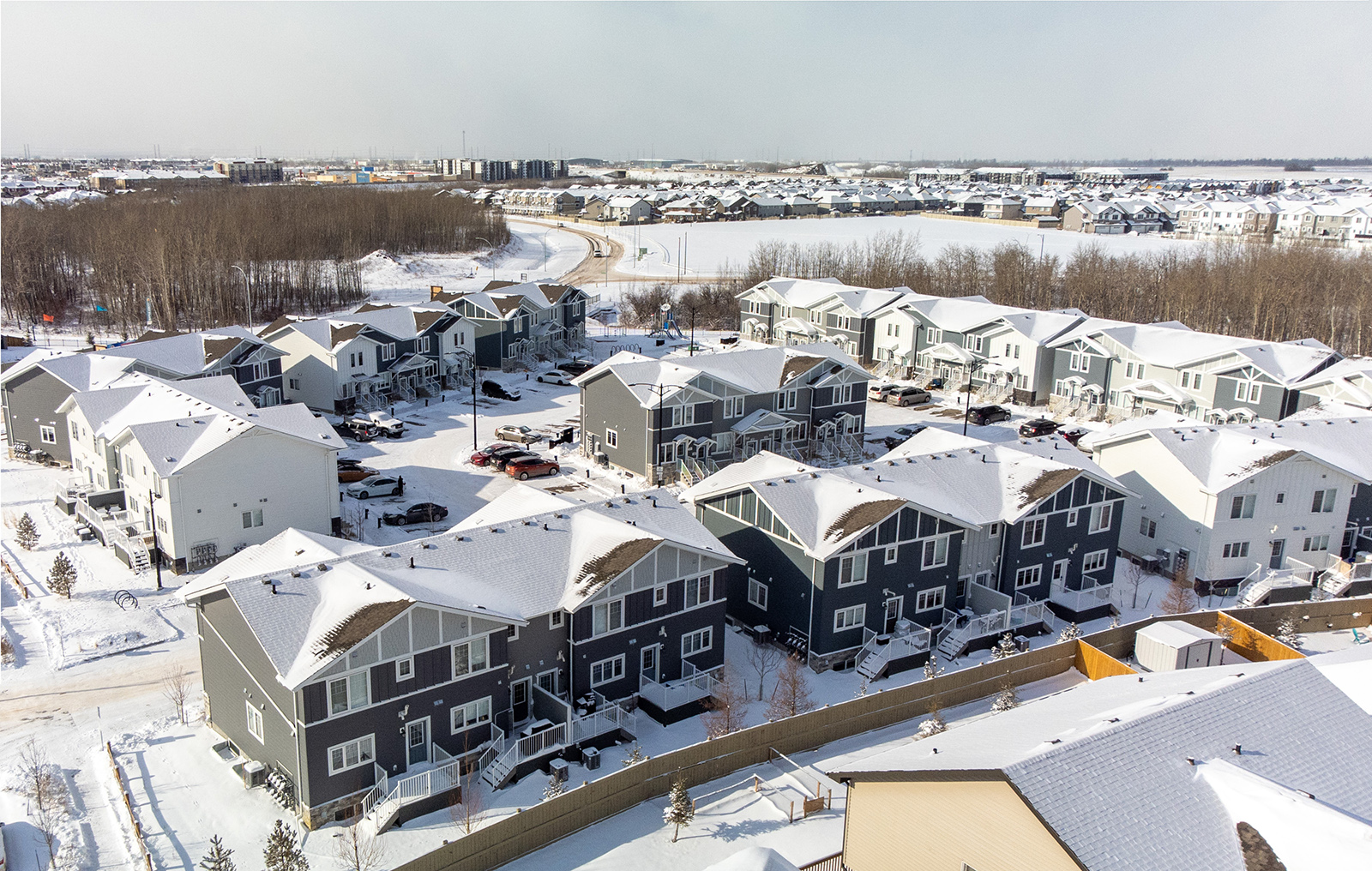More affordable housing means more homes, more neighbours and more opportunities for everyone to thrive.
The City believes all Edmontonians should be able to find the housing they need in the neighbourhoods they love. To create a city with housing for everyone, we need to welcome homes everywhere.
Housing in Edmonton
There are many different types of housing in our city. Housing comes in a range of built forms, whether it is a single-detached home, semi-detached, rowhousing or an apartment tower. Housing can be owned, rented at market rates or rented below market. Learn more by downloading the housing spectrum.
Affordable Housing

Affordable housing is operated, funded, or created with government subsidies.
It is offered at below-market rents for households that earn less than the median income for their household size. There are different types of affordable housing to meet different needs:
- Social housing: rent-geared-to-income for very low to low-income households
- Non-market affordable rentals: Shallow subsidy (less than 80% market rent) and deep subsidy (less than 50% market rent) for moderate to low income households
- Near-market affordable rentals: 80-90% market rent for moderate-income households
- Mixed-market affordable housing: combines units offered at market rent with units offered at below-market rates, creating a financially sustainable approach to affordable housing
Affordable housing providers have their own application processes. Typically, anyone over 18 can apply to live in affordable housing if their household earns less than median income for its household size. Learn more about Maximum Income by Household Size and Maximum Allowable Rental Rates.
Those applying need to provide proof of income and a letter of reference (typically from a landlord). To learn more about available options and eligibility, visit How to Access Housing.
Supportive Housing

Supportive housing is a type of affordable housing for very low to low-income individuals or households that require on-site support services to live independently. Residents sign a lease and pay rent, while also receiving financial help, support with life skills, and support services for health and wellness.
Every supportive housing program is unique. Each one is designed to meet the specific needs of the people who live there.
Staff may include medical professionals, psychologists, social workers, and support staff who help with tasks like grocery shopping, accessing transportation, and applying for income assistance and other government programs.
No matter the time of day, staff are always on site.
Like everyone in our communities, people who live in supportive housing are looking for a home to call their own. They can be referred to supportive housing based on the kind of support they need, like medical support, disability services, mental health and addictions support, and/or cultural support.
Every supportive housing program is unique. Each one is designed to meet the specific needs of the people who live there. Staff may include medical professionals, psychologists, social workers and support staff who help with tasks like grocery shopping, accessing transportation, and applying for income assistance and other government programs. No matter the time of day, staff are always on site.
Homeward Trust works with Alberta Health Services and supportive housing operators to manage resident referrals and help place people where they want to live and where they will find the support services they need. To learn more about housing options, visit How to Access Housing.
Housing Needs Assessment
The City’s Housing Needs Assessment gives the most up-to-date information on households that need affordable housing. About one in eight households (46,155 households) are in “core housing need”, which means they pay more than 30% of before-tax household income on housing, live in unsafe or crowded homes, and can’t afford any other suitable housing.
Affordable Housing Strategy
According to the Affordable Housing Strategy, Edmonton will need 3,800 units of social housing, 30,200 units of non-market affordable housing and 5,700 units of near-market affordable housing by 2050. More urgently, Edmonton needs at least 1,700 units of supportive housing to help respond to homelessness.
There is also a shortage of purpose-built market rental housing. According to the 2021 census, Edmonton had 143,000 renter households and a supply of 78,000 purpose-built rental units.
Common Concerns
Research suggests there is no evidence that non-market housing negatively affects the value of surrounding properties. A study by BC Housing Research Centre looked at residential property value trends (sale/assessed values) in areas surrounding 13 affordable and supportive housing sites across British Columbia. It found that “median residential sale prices and assessed values in the areas surrounding the case study sites mirrored or surpassed trends for the surrounding municipality, suggesting non-market housing does not have an impact on surrounding property values.”
This suggests that residential real estate values are driven by local and global economic factors, rather than new non-market housing in a community.
In Edmonton, the factors that impact your property value include things like location, lot characteristics (such as size, shape or corner lot), along with how close it is to commercial areas, transit, utilities and green space.
Affordable housing is a home like any other. Its residents share their neighbours’ interest in maintaining a safe environment. Overall, research shows that affordable housing does not have a negative impact on community safety.
If you have concerns about safety in your neighbourhood, the Neighbourhood Empowerment Team can help.
In 2020, City Council voted to enable Open Option Parking, which means that minimum on-site parking requirements have been removed from Edmonton’s Zoning Bylaw. This allows developers, homeowners and businesses to decide how much on-site parking to provide on their properties based on their particular operations, activities or lifestyle.
Removing parking minimums doesn’t necessarily mean that no parking will be provided. Businesses and homeowners know their parking needs best and have an interest in ensuring they are met, making this approach more likely to result in the “right amount” of parking.
The introduction of Open Option Parking was recognized as having potential impacts on on-street curbside parking demand and utilization patterns over time. As a result, the City has developed a Curbside Management Strategy, which seeks to more equitably and strategically manage and diversify how we use our public curbside space.
The City of Edmonton, including Edmonton Fire Rescue Services and EPCOR, consider servicing and infrastructure needs during the review of rezoning or development permit applications. These reviews consider the capacity of sanitary sewers and storm sewers, as well as the water supply for fire fighting. If upgrades are required, the builder is responsible for the cost. Required upgrades can include alley upgrades, sidewalk upgrades and extensions, power upgrades or power pole and streetlight relocation.
It is important to note that not all new developments trigger a need for infrastructure upgrades. For example, there can be instances where the design of the building can mean that there is no need to increase fire-fighting water capacity at all. EPCOR has found that Edmontonians have been reducing their water consumption steadily for the past 20 years (owing to things like more water-efficient toilets, washing machines, and dishwashers), which means less wastewater being produced by our homes.
Through neighbourhood renewal, EPCOR also looks for opportunities to implement low impact development (LID). LID is a site development technique that aims to mimic natural processes to manage stormwater runoff close to its source. Examples of LID features include rain gardens, bioretention basins, box planters, soil cells, and absorbent landscaping. EPCOR also works with the City to identify sites in redeveloping neighbourhoods to construct dry storm ponds that slow storm flows and mitigate flooding.











